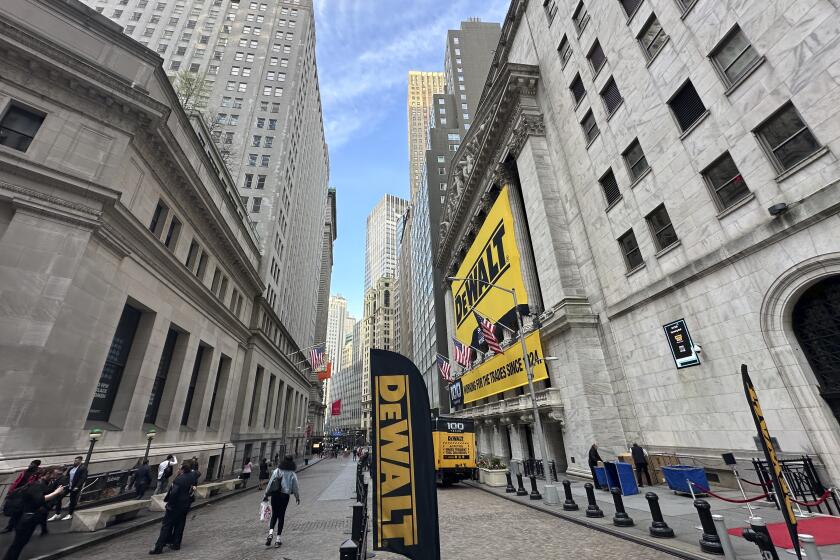Businesses Plan Scant Investment Increases
Businesses are sharply scaling back plans to invest in new plants and equipment this year, the government said Thursday, potentially undermining a pillar of the economy’s 5-year-old expansion.
Spending to boost production will rise a scant 1.5% to $603.4 billion this year, according to a Commerce Department survey of 30,000 companies.
That is sharply lower than the estimated 8.1% rise in capital spending in 1995 and the 12.3% increase in 1994.
Strong capital investment in machinery, computers and more efficient plants and equipment has been one of the elements supporting the current expansion, which turns 5 years old next month.
Analysts said businesses are slowing their spending because much of the investment needed for more efficient equipment has been completed.
But it was also a reaction to the slowdown in economic growth late last year, they said.
“One thing is clear: The fundamentals are no longer as favorable for capital spending as they were in prior years,” said Robert Dederick, economic consultant to Northern Trust Co. in Chicago.
“Along with the rest of the economy, the earlier vibrancy has dissipated,” he said.
Separately, the Labor Department reported a jump in jobless claims last week to the highest level since the summer of 1992.
Most of it was due to an 18-day strike at General Motors Corp., now settled.
In the week ended March 23, new claims for state unemployment benefits rose by 43,000 to 429,000. That was the highest since the week ended July 25, 1992, when they totaled 523,000, the Labor Department said.
Economists said the jump is an aberration caused by the GM strike and does not signal sudden weakness in the job market.
They expect the unemployment rate to drift lower once strike-related distortions are ironed out.
“The GM business disrupted a very discernible downtrend that had started becoming apparent in the previous few weeks,” said Anthony Karydakis, senior economist at First National Bank of Chicago.
In its report, the Commerce Department said the capital spending survey is the last of its kind. The government is scrapping it to save money.
Manufacturing companies plan to boost spending 7.2% in 1996, down from a 12.4% increase last year, according to the survey.
Producers of durable goods from cars to computers expect to spend 9.6% more, off from a 15.8% increase last year, and producers of nondurables such as food and paper plan a 4.6% rise, after 8.7% growth in 1995.
Michael Montgomery, an economist with DRI/McGraw Hill Inc. in Lexington, Mass., said slower growth in capital spending is predictable at this stage of the business cycle, when many projects have already been completed.
“We’ve had sluggish growth during much of the past year, with a couple of more mediocre quarters still coming,” Montgomery said.
“Spending is simply reacting to that,” he said.
Transportation companies plan to cut capital spending 5%, after an 11% increase last year.
Montgomery said that’s because railroads and hauling companies have already added many new rail cars and trucks.
Service companies in the health-care, social and education industries plan a 4.6% rise in spending, after a small increase last year.
Electric and gas utilities plan to slash spending by 5.2% this year, after a 1.5% rise in 1995.






